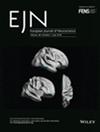A Taxonomy of Neuroscientific Strategies Based on Interaction Orders
Abstract
In recent decades, neuroscience has advanced with increasingly sophisticated strategies for recording and analysing brain activity, enabling detailed investigations into the roles of functional units, such as individual neurons, brain regions and their interactions. Recently, new strategies for the investigation of cognitive functions regard the study of higher order interactions—that is, the interactions involving more than two brain regions or neurons. Although methods focusing on individual units and their interactions at various levels offer valuable and often complementary insights, each approach comes with its own set of limitations. In this context, a conceptual map to categorize and locate diverse strategies could be crucial to orient researchers and guide future research directions. To this end, we define the spectrum of orders of interaction, namely, a framework that categorizes the interactions among neurons or brain regions based on the number of elements involved in these interactions. We use a simulation of a toy model and a few case studies to demonstrate the utility and the challenges of the exploration of the spectrum. We conclude by proposing future research directions aimed at enhancing our understanding of brain function and cognition through a more nuanced methodological framework.


 求助内容:
求助内容: 应助结果提醒方式:
应助结果提醒方式:


